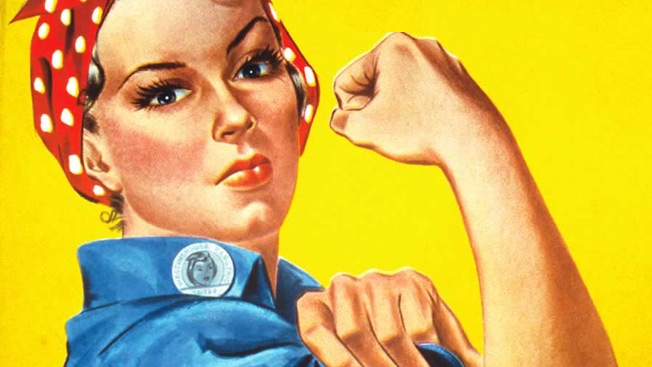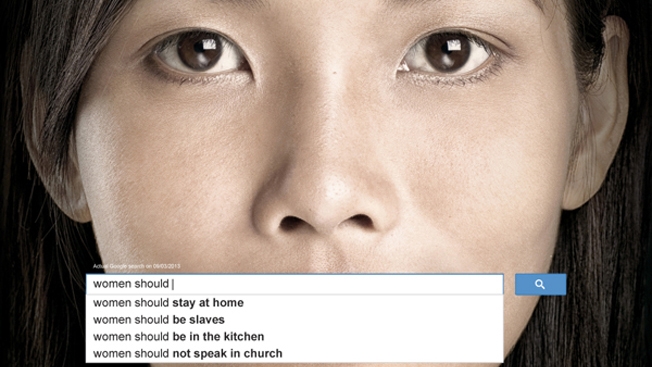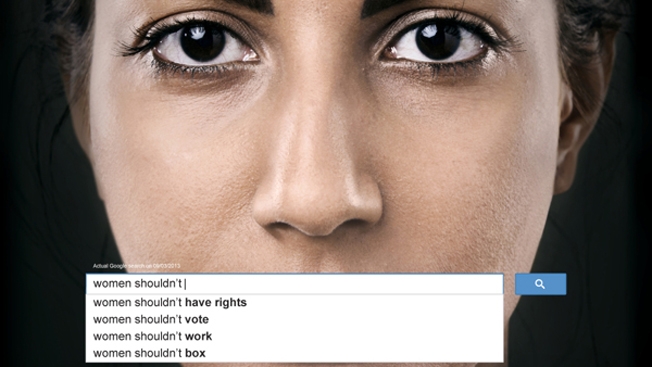Women’s Super League Football rebrands
Posted in: UncategorizedThere's a bunch of rebranding of women's football in the UK and they made a fancy video about it:
There's a bunch of rebranding of women's football in the UK and they made a fancy video about it:
L’artiste Veronica Azaryan de Saint-Pétersbourg nous dévoile ces œuvres absolument magnifiques : l’art du maquillage sur des femmes. Le résultat final est remarquable, les visages peints dans des couleurs unies et certains éclaboussés de peinture d’or ou saupoudrés de pigments colorés créant de splendides jeux de textures.
Le photographe américain Patricio Suarez s’applique à capturer la sensualité et la beauté des femmes et des corps nus, essentiellement pris en noir et blanc, avec une lumière qui ajoute tout le caractère érotique à ses photos. De très beaux portraits et de très belles compositions, à découvrir dans la galerie.
La photographe Christine Muraton nous fait découvrir cette série photos de scènes simplistes qu’elle transforme en contes fantastiques. Ces photographies prennent un caractère irréel, minimaliste et poétique de part l’utilisation des couleurs froides, des sujets choisis et de la lumière utilisée.
Agée de 20 ans, la photographe espagnole Berta Vicente fait de très belles photos pleines de délicatesse qui mêlent portraits de jeunes filles, argentique, noir et blanc, couleurs, symétries, dans des instants figés. Une sélection de ses photos est à découvrir en détails dans la suite de l’article.
L’artiste Ed Fairburn utilise des cartes de routes, de trains et de rivières pour ensuite créer ses portraits féminins à grande échelle. Tel la sculpture d’un objet à partir d’un bloc de pierre, Fairburn utilise méticuleusement encre et crayon hachuré pour créer des portraits parmi les caractéristiques topographiques.
Le photographe Puzzleman Leung capture des scènes mystérieuses que le jeune talent créer dans son esprit. Les images qui en résultent émanent quelque chose d’intemporel et aérée comme si ce moment fugace ne pourrait pas avoir lieu dans la vie réel. Les scènes sont souvent complétées par un certain sens de l’humour.
Découverte de Katja Kemnitz qui est une photographe travaillant les photos de corps humains, mais également des clichés où la nature est omniprésente comme vous pourrez le découvrir dans cet article ci-dessous. Des photographies fascinantes, où l’humain semble se fondre dans des espaces naturels et sauvages.
L’israélien Yigal Ozeri a pour démarche de peindre des femmes dans la nature. Ces tableaux en trompe-l’œil sont d’un réalisme à couper le souffle. Au milieu d’une forêt, dans une prairie ou près d’un bois aux couleurs automnales, il dessine des jeunes filles à l’expression mélancolique. Plus de détails ci-dessous.
Pour Press Play, le vidéaste américain Nelson Carvajal a rassemblé les femmes des films de Martin Scorsese en une vidéo : de la femme au sang chaud dans Le Loup de Wall Street, toutes amoureuses et trahies, à la femme fatale qu’incarne Sharon Stone. Un éventail varié de femmes complexes à découvrir en vidéo.
Nelson Carvajal’s site.
Press Play.
Lee Horyon est un artiste coréen ayant réalisé une série d’oeuvres d’art entre réalisme et surnaturel. L’artiste travaille sur le mouvement et les jeux de transparence des vêtements. Un travail sensuel et un style « photoréaliste » qui montre la dextérité de l’artiste dans la technique de la peinture à l’huile.
Une série de photographies époustouflante réalisée par Arlette Chiara Sivizaca Condé. Des portraits captivants remplis d’une beauté et d’un sentiment d’émotion brute. Des gestes dramatiques, des visages contemplatifs et des qualités surréalistes qui émanent des scènes photographiées.
Basée à Chicago, la photographe américaine Patty Carroll nous propose « Anonymous Women: Draped ». Commencée lors du début de la guerre en Irak, elle a voulu rappeler avec ces silhouettes de femmes drapées que, quelque soit la nationalité ou la confession des femmes, toutes méritent de posséder un lieu à elle.

It's been a great year for women-empowering ads. Brands tackled everything from gender stereotypes (Pantene) to sexism (UN Women) to cultural repression (Tanishq), encouraged women to be kinder to themselves (Dove), got girls to celebrate their own strength (GoldieBlox, Mercy Academy), and even made a this-is-for-real ad about periods (HelloFlo).
Below, we've collected the seven most popular campaigns of the year. Popular doesn't necessarily mean universally loved; none of the work was received without some backlash or criticism. You can vote for your favorite with a tweet. Not seeing your favorite? Let us know in the comments.
UPDATE: The runaway winner is Mercy Academy. Congratulations!
![]()

Late last week, a creative twist on print advertising became a global phenomenon, as the "Auto-Complete Truth" campaign for UN Women exploded across social media and generated worldwide discussion.
AdFreak's writeup of the campaign by Memac Ogilvy & Mather Dubai has been shared more than 116,000 times on Facebook alone, making it the most-shared item of the year on Adweek.com. The campaign has since been featured by hundreds of blogs, news sites and social media feeds around the world.
"We have been overwhelmed by the instant enthusiasm and support that our campaign has received," says Ronald Howes, managing director of Memac Ogilvy & Mather Dubai. "This has encouraged us to develop it even further, after the global acclaim that is has received.”
The client, of course, was ecstatic to see a relatively modest ad campaign spark the exact kind of international debate it was intended for. "UN Women is very heartened by the discussion the campaign has sparked," says Nanette Braun, communications and advocacy chief for UN Women. "Very obviously there is a demand for a global conversation on women’s rights, empowerment and gender equality, which is exactly what the ads were intended to generate.”

To learn more about the campaign and the vocal response it has received, check out our Q&A with the team that created the ads, after the jump:
AdFreak: How did this project come about? Was it intended to be a print campaign from the start, and will these ads actually be running in print?
Memac Ogilvy & Mather Dubai: This creative idea for UN Women began, as many searches naturally do, on a Google search bar. What we came across was simply shocking. The appalling global results to an auto-correct search of terms such as "women should" was something we felt needed to be shared.
The campaign was published earlier in 2013 in the UAE and became a viral success this week. UN Women plans to publish internationally in the future.
Many of the commenters and people sharing the campaign have been posting screenshots of their own autocompleted searches, with different results around the world. Was this something you hoped the campaign would spark people to try?
We have been pleasantly surprised by the viral success of this campaign. We wanted to start a conversation on the major barriers which are in place of women's economic, political and social empowerment across the globe—issues that UN Women is working to address. We hope that our work will go some way to help raise awareness of the sexist global attitudes toward women and will enable a dialogue to begin on the topic. We encourage people to join in the debate on Twitter with #womenshould, or on the UN Women website.
We are so pleased to see others are inspired by our work and witness the creation of their own versions of our campaign, which tackle other social issues.
Did you selectively edit the results of the Google searches you did for this campaign? Were some irrelevant suggestions tossed out to focus on the most egregious examples of sexism?
What makes our campaign so powerful is its truth and simplicity. None of the searches were engineered to produce these results; that's why we were so shocked to discover them. In order to raise awareness of the inequality women face, we did choose to highlight the most compelling answers, to deliver the most impact, however the search results from Google autocorrect were not falsified in any way.
Some have criticized the campaign by saying that Google autocomplete suggestions have been used in several marketing campaigns in recent years. Were you concerned about this approach seeming derivative or over-used?
Our campaign is not focused on Google autocomplete suggestions. The medium of Google search was merely a base upon which we were able to successfully illustrate our point. Google search is an iconic symbol in our digital world and therefore recognizable for millions of people, so we used this as a vehicle to express our ideas. The truth behind the search about people’s global perceptions is what our campaign focused on, not the technology of Google autocomplete.
Lots of people are debating whether you can actually change these kinds of search results. Do you think it's possible, or is it something that will have to change slowly over time as a barometer of equality?
We are aware that change of this magnitude will not happen overnight! However we hope that our work will go some way to alter perceptions by raising awareness of the issues which women face.




![]()

Here's a simple and powerful campaign idea from UN Women using real suggested search terms from Google's autocomplete feature. Campaign creator Christopher Hunt, head of art for Ogilvy & Mather Dubai, offers this summary: “This campaign uses the world's most popular search engine (Google) to show how gender inequality is a worldwide problem. The adverts show the results of genuine searches, highlighting popular opinions across the world wide web.” Each ad's fine print says "actual Google search on 09/03/13." While Google users in different countries are likely to get different results, a quick test shows that several of these suggested terms definitely come up in U.S. searches. Since its creation, autocomplete has become a popular device for social debate and even inspired a recent epic visual from xkcd, but these ads do a stellar job driving home the daunting fact that enough people around the world share these vile opinions that Google has come to expect them. Check out all the design versions after the jump. Via Design Taxi.




![]()
La photographe bulgare Aneta Ivanova laisse entrevoir une douceur délicate dans ses clichés à l’aide de la technique de la double exposition. Corps de femme et milieux extérieurs se confondent et se complètent pour donner une série de photos splendides. A découvrir sur son portfolio et dans la suite de l’article
| THE ORIGINAL? Against Domestic Violence – 2011 Source : Violenceagainstwomen.eu Agency : ProximityBBDO Brussels (Belgium) |
LESS ORIGINAL Against domestic violence – 2012 Source : TheReel Agency : BBH London (United Kingdom) |
L’agence Lowe a pu penser cette nouvelle campagne print pour l’Association of Women for Action and Research. Avec des photographies de Sebastian Siah, le montage sur le cycle de la violence sur les femmes est bien souligné. L’ensemble est à découvrir dans la suite.
Copyright Fubiz™ – Suivez nous sur Twitter et Facebook